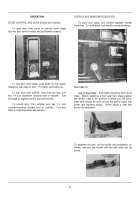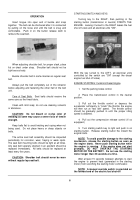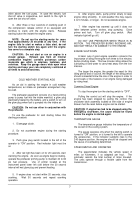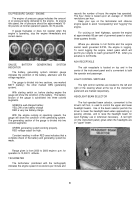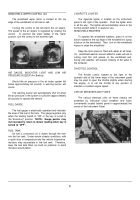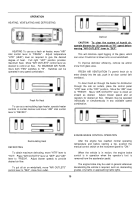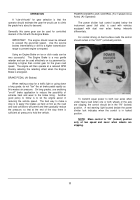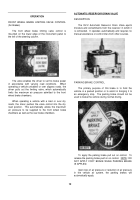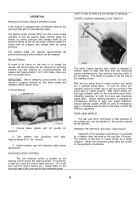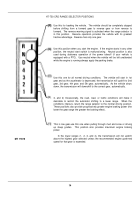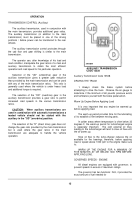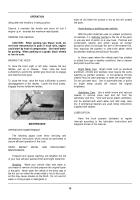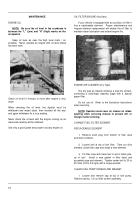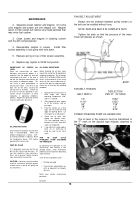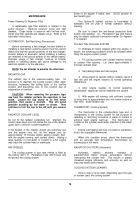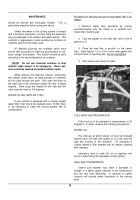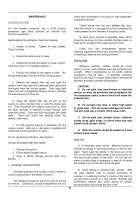TM-5-3805-254-14-P-1 - Page 21 of 590
OPERATION
TRANSMISSION CONTROL (Auxiliary)
The auxiliary transmission, used in conjunction with
the main transmission, provides additional gear ratios.
The auxiliary transmission (in addition to the main
transmission) must be placed in one of the driving
positions / before power can be transferred to the rear
wheels.
The auxiliary transmission control protrudes through
the cab floor and gear shifting is similar to the main
transmission.
The operator can, after knowledge of his load and
road condition, manipulate the gear ratios of a main and
auxiliary transmission to obtain the most efficient
operation and road speed for his particular operation.
Selection of the "UD" (underdrive) gear in the
auxiliary transmission gives a greater gear reduction
than provided by the main transmission and can be used
with any of the main transmission ratios.
This ratio is
generally used where the vehicle is under heavy load
and additional torque is required.
The selection of the "OD" (overdrive) gear in the
auxiliary transmission provides a gear ratio to permit
increased road speeds in the various transmission
ratios.
CAUTION:
When auxiliary transmissions are
used in combination with automatic transmissions a
loaded vehicle should not be started with the
auxiliary in the "OD" (overdrive) position.
The selection of the "D" (direct drive) gear does not
change the gear ratio provided by the main transmission
but is used where the gear ratios in the main
transmission are adequate to handle the vehicle
operation.
AUXILIARY TRANSMISSION
CODE 13538
Auxiliary Transmission Code 13538
DRIVING THE TRUCK
1.
Always check the brake system before
attempting to drive the truck.
Observe the air gauge to
determine if the minimum of 60 pounds pressure exists
and familiarize yourself with the brake pedal action.
Warm Up Engine Before Applying Load
It is very important that any engine be warmed up
before applying load.
The warm-up period provides time for the lubricating
oil to establish a film between moving parts.
In colder areas where temperature is often below 32
degrees F, the warm-up period for turbocharged engine
is especially important.
The cold external oil lines
leading to the turbocharger will tend to slow oil flow until
the oil warms up.
Slow oil flow to the turbo-charger reduces the oil
available for the bearings; therefore, before applying
load or speed above 1000 rpm to the engine make sure
to:
WARM UP THE ENGINE FOR A MINIMUM OF
FIVE MINUTES AT OR BELOW 1000 RPM BEFORE
APPLYING LOAD.
GOVERNED SPEEDS - ENGINE
All diesel engines are equipped with governors to
prevent speeds in excess of maximum ratings.
The governor has two functions: First, it provides the
exact amount of fuel needed for
15
Back to Top

